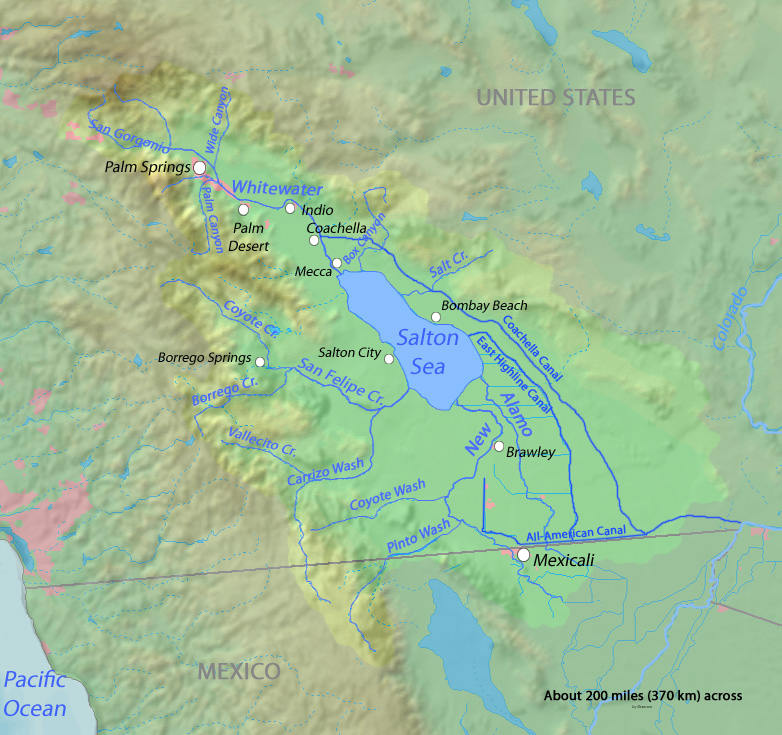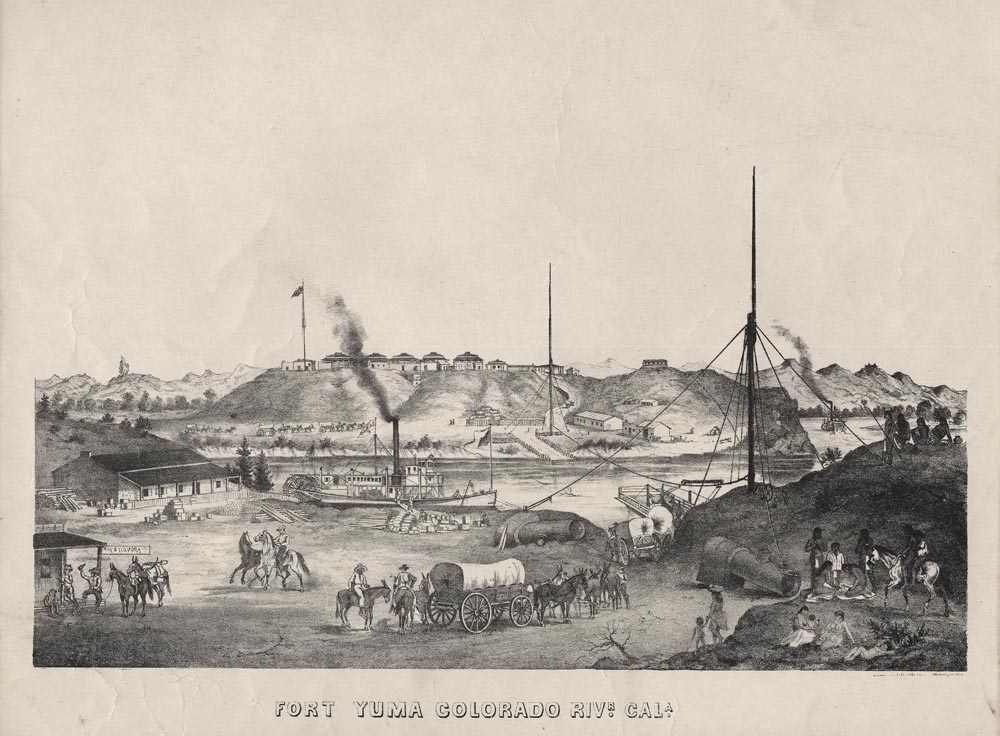|
Gyascutus Allenrolfeae
''Gyascutus allenrolfeae'' is a large species of buprestid metallic wood-boring beetle endemic to the Sonoran Desert. Description ''Gyascutus allenrolfeae'' is a large buprestid beetle, averaging 16.8-19.5mm in length for adults. Adult males are somewhat smaller than adult females, with both showing a brassy-gray coloration. Distribution and habitat ''Gyascutus allenrolfeae'' is found only in alkali flats and desert lowlands within the western Sonoran Desert, with the species most frequently seen near the shores of the Salton Sea. Records also exist from near Yuma, Arizona and as far south as Bahia Santa Maria south of San Felipe in Baja California. It is always found associated with its host plant, iodine bush. Ecology Larvae feed in the roots of iodine bush. Adults emerge in summer and can be found between late June and August. Etymology The specific name ''allenrolfeae'' refers to the species' sole host plant ''Allenrolfea occidentalis ''Allenrolfea occidentalis'' ... [...More Info...] [...Related Items...] OR: [Wikipedia] [Google] [Baidu] |
Buprestid
Buprestidae is a family of beetles known as jewel beetles or metallic wood-boring beetles because of their glossy iridescent colors. Larvae of this family are known as flatheaded borers. The family is among the largest of the beetles, with some 15,500 species known in 775 genera. In addition, almost 100 fossil species have been described. The larger and more spectacularly colored jewel beetles are highly prized by insect collectors. The elytra of some Buprestidae species have been traditionally used in beetlewing jewellery and decoration in certain countries in Asia, like India, Thailand and Japan. Description and ecology Shape is generally cylindrical or elongate to ovoid, with lengths ranging from , although most species are under . ''Catoxantha'', '' Chrysaspis'', ''Euchroma'' and ''Megaloxantha'' contain the largest species. A variety of bright colors are known, often in complicated patterns. The iridescence common to these beetles is not due to pigments in the exoskeleton, ... [...More Info...] [...Related Items...] OR: [Wikipedia] [Google] [Baidu] |
Sonoran Desert
The Sonoran Desert ( es, Desierto de Sonora) is a desert in North America and ecoregion that covers the northwestern Mexican states of Sonora, Baja California, and Baja California Sur, as well as part of the southwestern United States (in Arizona and California). It is the hottest desert in both Mexico and the United States. It has an area of . In phytogeography, the Sonoran Desert is within the Sonoran Floristic province of the Madrean Region of southwestern North America, part of the Holarctic realm of the northern Western Hemisphere. The desert contains a variety of unique endemic plants and animals, notably, the saguaro (''Carnegiea gigantea'') and organ pipe cactus (''Stenocereus thurberi''). The Sonoran Desert is clearly distinct from nearby deserts (e.g., the Great Basin, Mojave, and Chihuahuan deserts) because it provides subtropical warmth in winter and two seasons of rainfall (in contrast, for example, to the Mojave's dry summers and cold winters). This create ... [...More Info...] [...Related Items...] OR: [Wikipedia] [Google] [Baidu] |
Salton Sea
The Salton Sea is a shallow, landlocked, highly saline body of water in Riverside and Imperial counties at the southern end of the U.S. state of California. It lies on the San Andreas Fault within the Salton Trough that stretches to the Gulf of California in Mexico. Over millions of years, the Colorado River has flowed into the Imperial Valley and deposited alluvium (soil), creating fertile farmland, building up the terrain, and constantly moving its main course and river delta. For thousands of years, the river has alternately flowed into the valley, or diverted around it, creating either a saline lake called Lake Cahuilla, or a dry desert basin, respectively. When the Colorado River flows into the valley, the lake level depends on river flows and the balance between inflow and evaporative loss. When the river diverts around the valley, the lake dries completely, as it did around 1580. Hundreds of archaeological sites have been found in this region, indicating possibl ... [...More Info...] [...Related Items...] OR: [Wikipedia] [Google] [Baidu] |
Yuma, Arizona
Yuma ( coc, Yuum) is a city in and the county seat of Yuma County, Arizona, United States. The city's population was 93,064 at the 2010 census, up from the 2000 census population of 77,515. Yuma is the principal city of the Yuma, Arizona, Metropolitan Statistical Area, which consists of Yuma County. According to the United States Census Bureau, the 2020 estimated population of the Yuma MSA is 203,247. According to Guinness World Records, Yuma is the "Sunniest City on Earth," promising "sunshine and warm weather at least 91% of the year." Anywhere from 70,000 to over 85,000 out-of-state visitors make Yuma their winter residence. Yuma's weather also makes it an agricultural powerhouse, growing over 175 types of crops, the largest of which is lettuce. Yuma County provides 90% of all leafy vegetables grown from November to March in the United States. Yuma is also known for its large military population due to several military bases, including the Marine Corps Air Station. Yum ... [...More Info...] [...Related Items...] OR: [Wikipedia] [Google] [Baidu] |
San Felipe, Baja California
San Felipe is a coastal city in San Felipe Municipality, Baja California, located on the Gulf of California. The population of San Felipe was reported as 17,143 inhabitants in the 2020 Mexican Census. San Felipe is historically a fishing town. Today it is also a popular tourist destination, known for its beaches, nature, and desert racing, as home to the '' San Felipe 250''. History The first European to arrive in the Baja California Peninsula was Hernán Cortés on May 3, 1535. The history of San Felipe began later with the expeditions of Francisco de Ulloa, one of Cortés's captains who navigated the bay in September 1535. In 1536, Hernando de Alarcón and Domingo Castillo explored the region and made the first detailed map of the peninsula, giving San Felipe its original name, Santa Catalina. After the first expeditions were long forgotten, Father Eusebio Kino rediscovered the Baja California peninsula in 1701. Juan de Ugarte later built the first ship in Baja California a ... [...More Info...] [...Related Items...] OR: [Wikipedia] [Google] [Baidu] |
Baja California
Baja California (; 'Lower California'), officially the Free and Sovereign State of Baja California ( es, Estado Libre y Soberano de Baja California), is a state in Mexico. It is the northernmost and westernmost of the 32 federal entities of Mexico. Before becoming a state in 1952, the area was known as the North Territory of Baja California (). It has an area of (3.57% of the land mass of Mexico) and comprises the northern half of the Baja California Peninsula, north of the 28th parallel, plus oceanic Guadalupe Island. The mainland portion of the state is bordered on the west by the Pacific Ocean; on the east by Sonora, the U.S. state of Arizona, and the Gulf of California; on the north by the U.S. state of California; and on the south by Baja California Sur. The state has an estimated population of 3,769,020 as of 2020, significantly higher than the sparsely populated Baja California Sur to the south, and similar to San Diego County, California, to its north. Over 75% of t ... [...More Info...] [...Related Items...] OR: [Wikipedia] [Google] [Baidu] |
Iodine Bush
''Allenrolfea occidentalis'', the iodine bush, is a low-lying shrub of the Southwestern United States, California, Idaho, and northern Mexico.Shultz, L.M.: 'eFloras 2008''Allenrolfea occidentalis'' in Flora of North America Missouri Botanical Garden, St. Louis, MO & Harvard University Herbaria, Cambridge, MA. It grows in sandy, often salty, distinctly alkaline soils, such as desert washes and saline dry lakebeds. It is a common halophyte member of the alkali flat ecosystem. Description The knobby green stems are fleshy and appear jointed at the Internode (botany), internodes between segments. Often the segments are so short they are nearly round. The leaves appear as flaky scales scattered across the surface of the stems. The genus was named for the English botanist Robert Allen Rolfe.Shultz, L.M.: 'eFloras 2008''Allenrolfea'' in Flora of North America Missouri Botanical Garden, St. Louis, MO & Harvard University Herbaria, Cambridge, MA. The seeds of iodinebush have been used ... [...More Info...] [...Related Items...] OR: [Wikipedia] [Google] [Baidu] |
Gyascutus Allenrolfeae Habitat
''Gyascutus'' is a genus of beetles in the family Buprestidae, containing the following species: * ''Gyascutus allenrolfeae'' (Verity, 1978) * ''Gyascutus caelatus'' (LeConte, 1858) * ''Gyascutus carolinensis'' Horn, 1883 * ''Gyascutus castaneus'' (Helfer, 1953) * ''Gyascutus dianae'' (Helfer, 1954) * ''Gyascutus fulgidus'' (Barr, 1969) * ''Gyascutus granulatus'' (Van Dyke, 1942) * ''Gyascutus insularis'' (Helfer, 1953) * ''Gyascutus jeanae'' (Nelson, 1988) * ''Gyascutus pacificus'' (Chamberlin, 1938) * ''Gyascutus paragranulatus'' Nelson, 2000 * ''Gyascutus planicosta'' (LeConte, 1858) * ''Gyascutus westcotti ''Gyascutus'' is a genus of beetles in the family Buprestidae, containing the following species: * '' Gyascutus allenrolfeae'' (Verity, 1978) * '' Gyascutus caelatus'' (LeConte, 1858) * '' Gyascutus carolinensis'' Horn, 1883 * ''Gyascutus casta ...'' Nelson, 2000 References Buprestidae genera {{Buprestidae-stub ... [...More Info...] [...Related Items...] OR: [Wikipedia] [Google] [Baidu] |
Allenrolfea Occidentalis
''Allenrolfea occidentalis'', the iodine bush, is a low-lying shrub of the Southwestern United States, California, Idaho, and northern Mexico.Shultz, L.M.: 'eFloras 2008''Allenrolfea occidentalis'' in Flora of North America Missouri Botanical Garden, St. Louis, MO & Harvard University Herbaria, Cambridge, MA. It grows in sandy, often salty, distinctly alkaline soils, such as desert washes and saline dry lakebeds. It is a common halophyte member of the alkali flat ecosystem. Description The knobby green stems are fleshy and appear jointed at the internodes between segments. Often the segments are so short they are nearly round. The leaves appear as flaky scales scattered across the surface of the stems. The genus was named for the English botanist Robert Allen Rolfe.Shultz, L.M.: 'eFloras 2008''Allenrolfea'' in Flora of North America Missouri Botanical Garden, St. Louis, MO & Harvard University Herbaria, Cambridge, MA. The seeds of iodinebush have been used as food in Nort ... [...More Info...] [...Related Items...] OR: [Wikipedia] [Google] [Baidu] |
Fauna Of California
The fauna of the State of California may be the most diverse in the United States of America. Of the Lower 48 conterminous states, California has the greatest diversity in climate, terrain and geology in general. The state's six life zones are the lower Sonoran (desert); upper Sonoran (foothill regions and some coastal lands); transition (coastal areas and moist northeastern counties); and the Canadian, Hudsonian, and Arctic zones, comprising California's highest elevations. California’s diverse geography gives rise to dozens of different ecosystems, each of which has its own unique native plants and animals. California is a huge state, the 3rd largest in the U.S., and can range broadly in habitat type. Earth scientists typically divide California into eleven distinct geomorphic provinces with clearly defined boundaries. They are, from north to south, the Klamath Mountains, the Cascade Range, the Modoc Plateau, the Basin and Range, the Coast Ranges, the Central Valley, the ... [...More Info...] [...Related Items...] OR: [Wikipedia] [Google] [Baidu] |
Insects Described In 2000
Insects (from Latin ') are pancrustacean hexapod invertebrates of the class Insecta. They are the largest group within the arthropod phylum. Insects have a chitinous exoskeleton, a three-part body (head, thorax and abdomen), three pairs of jointed legs, compound eyes and one pair of antennae. Their blood is not totally contained in vessels; some circulates in an open cavity known as the haemocoel. Insects are the most diverse group of animals; they include more than a million described species and represent more than half of all known living organisms. The total number of extant species is estimated at between six and ten million; In: potentially over 90% of the animal life forms on Earth are insects. Insects may be found in nearly all environments, although only a small number of species reside in the oceans, which are dominated by another arthropod group, crustaceans, which recent research has indicated insects are nested within. Nearly all insects hatch from eggs. Insect ... [...More Info...] [...Related Items...] OR: [Wikipedia] [Google] [Baidu] |




